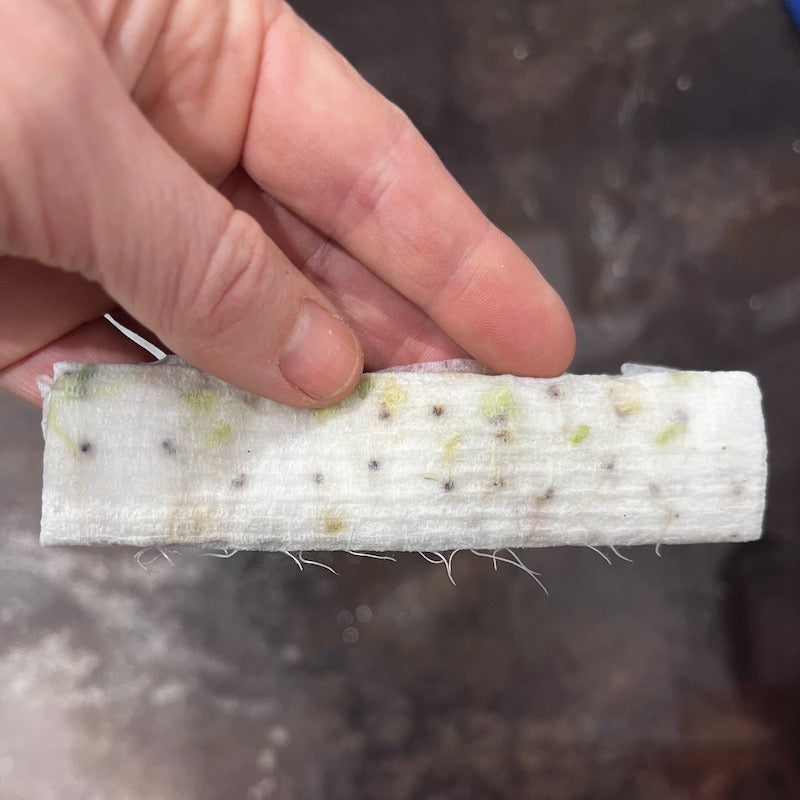Most of the time as a home gardener, you don't really need to germination test your seeds. You sow them and if they germinate, they're good. Yay!
But sometimes you'd like to know if that old packet of seeds you just found is any good (perhaps before you share some with your friends . . .).
Here's how to test your seeds!
1.
Start with a moist paper towel and arrange 100 seeds in a 10 x 10 grid. This is super fiddly. Even if you don't need reading glasses yet . . . you probably need some reading glasses.
Label your paper towel with the seed variety you're testing.

Then, neatly fold up your paper towel, put it in a plastic bag, and leave it somewhere warm for about 10 days.

I did three varieties all at once for this test.
2.
After 10 days, you can check the results!
Look at all the roots growing out through the paper towel!

Open up the paper towel and carefully, carefully check how many of the seeds germinated. With luck, most of them will have germinated, and it will be easier to count the ungerminated seeds.

Again, you're going to want your glasses!
In fact, if you have a microscope, even better!

One of the arugula seeds looked like it hadn't germinated, but when I got it under the microscope, I could see the teeny root just poking out.
Here's another fun thing to look at up close:

3.
To summarize how to germinate test your seeds:
- Lay out 100 seeds neatly on a damp paper towel. Fold it up, put it in a plastic bag, and leave it in a warm place for 10 days.
- After 10 days, count how many seeds germinated.
- The number of seeds that germinated divided by the total number of seeds tested is your germination percentage!
Would you like seed starting tips direct to your inbox? I write a very reliable weekly newsletter - updated more frequently than the blog!
